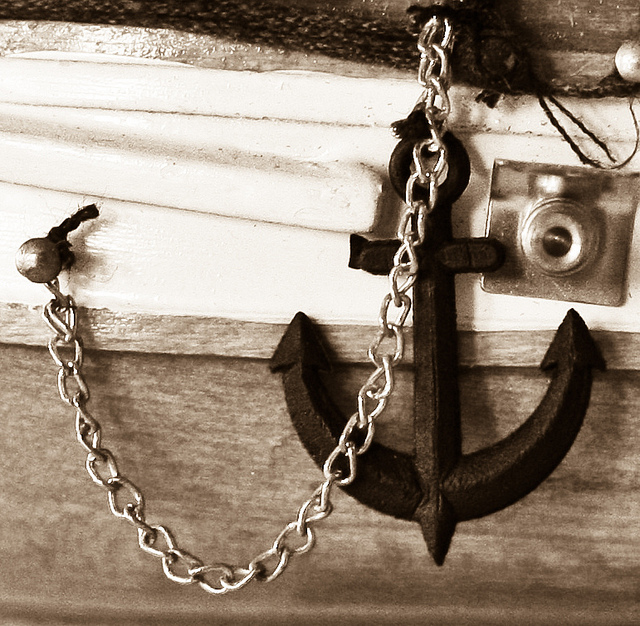
Image Credit:
When we are involved in a negotiation that involves prices, we need to keep in mind that no matter what negotiation styles or negotiating techniques are being used, it’s the first number that either side presets that will play an important determining factor in how the rest of the negotiation goes. It turns out that opening offers have a strong effect on price negotiations. What happens is that the first offer typically serves as an anchor that strongly influences any discussions that follows. Where things can start to get crazy is when you realize that even random numbers can have a dramatic impact on people’s judgments and decisions. What all of this means is that negotiators need to know how to anchor prices during a negotiation.
Determine How Well Both Sides Know The Bargaining Zone
One of the biggest questions that a negotiator faces in any negotiation is trying to determine if they should be the ones to make a first offer. In order to be able to answer this question, you need to assess your best alternative to a negotiated agreement, or BATNA; your target price; and your price reservation point—your point of indifference between accepting a deal and pursuing your BATNA. The next thing that you are going to want to do is to estimate the same things for the other side: their BATNA, target, and reservation point. This analysis will tell you how much you know about the zone of possible agreement, or ZOPA—the range of options that would be acceptable to both sides.
In the end, your decision of whether to make the first offer should be based on two factors: your own knowledge of the ZOPA and your assessment of the other side’s knowledge of the ZOPA.
The result of all of this analysis is that when the other party seems to know more than you do about the size of the ZOPA, you will have trouble anchoring effectively. If you decide to engage in price anchoring, how aggressively should you bid? A smart guideline is to anchor at the end of the ZOPA that favors you, but make sure that your price is not outside of the bargaining range.
Range Offers Can Be Made
One of the most important things that a negotiator can learn is that a price is not necessarily a single number. Instead, you can think of a price as being a range. Studies have shown that expressing offers in a range can help you claim more value in financial negotiations.
The key to making this technique work for you is to deliver a so-called bolstering range offer, one that includes the single-figure offer you might plan to make at one end and a more ambitious number at the other end. Bolstering-range offers appear to lead to better outcomes in single-issue negotiations. Additionally, because ranges appear to convey flexibility and accommodation, they may offset the assertiveness that comes across when you use price anchoring.
Be Very Precise With Your Price Anchors
Given all of this, what should your first offered price look like? Once again we can turn to negotiation studies that have shown that that precise numerical first offers are more effective than rounder offers. A good example of this would be a house with a list price of $366,500 is likely to attract higher bids than houses with list prices of $367,000 or $366,000.
So just exactly how ambitious should you get with this price anchoring stuff? Studies have shown that more ambitious first offers led to more favorable outcomes for the party making the first offer. There have been additional studies that have shown that negotiators making a highly precise first offer were less ambitious than those who were less precise—but still came out ahead.
Why do things work out this way? First, offer recipients made less ambitious counteroffers in response to more precise offers. The reason that they do this is because they judge those who made more precise offers to be more knowledgeable about the value of the item being sold. Second, those who made precise first offers made smaller subsequent concessions than those who made round first offers as the price haggling continued.
So what can we learn from all of this? When you are anchoring in negotiation, try to make a precise numerical offer, but make sure it’s no less ambitious than it would be if it were a round offer. Ambitious, precise price anchoring should lead to the best results.
What All Of This Means For You
Even the best, most experienced, negotiators can become nervous when it is time to start to talk about actual prices during a principled negotiation. This is when the rubber meets the road. What we are all looking for is a way that we can make price discussions work out for us. It turns out that if we can learn how to use price anchoring, we may be one step ahead in getting the price that we want out of our next negotiation.
Before the next negotiation that you will be involved in that will involve prices starts, take the time to determine your bargaining zone. This is the range in which you will feel comfortable discussing possible prices. At the same time attempt to determine the other side’s bargaining zone. Knowing these values will help you to determine how aggressive you can be with your anchor pricing. Next you are going to want to potentially use a range of prices instead of a fixed price. When you do this you can use a bolstering price to see if you can get more than you had been planning on. Finally, understand that if you are very precise in the value that you offer the other side may decide that you know more than they do and will be more accepting of your offer.
The deals that we negotiate are made up of many different pieces. Often the price is the centerpiece of any deal that we are trying to put together. In order to get the best deal possible, we can use the anchoring technique to steer the pricing discussion in the direction that we want it to go. Get good at using this technique and you just might discover that the deals that you are able to close have prices that are better than you could have ever hoped for.
– Dr. Jim Anderson
Blue Elephant Consulting –
Your Source For Real World Negotiating Skills™
Question For You: If you make a price proposal to the other side and they come back to you with a completely different price, what should you do?
What We’ll Be Talking About Next Time
As negotiators, our goal whenever we are starting a negotiation is to find a way to get the best deal possible. This is not always an easy thing to make happen. The best negotiators are the ones who can use their negotiation styles and negotiating techniques to both create value during the negotiation and then claim that value as a part of a deal. In order to become better at making this happen, the following 10 negotiation skills can be used.

